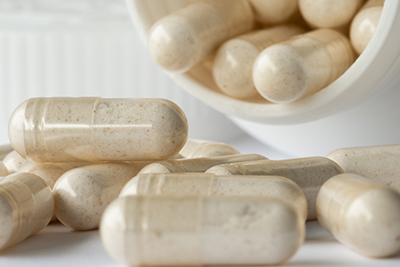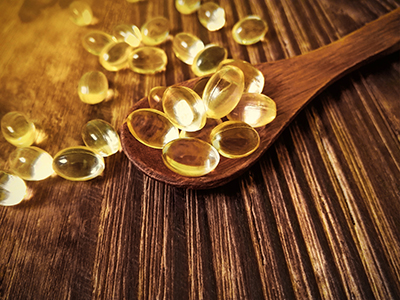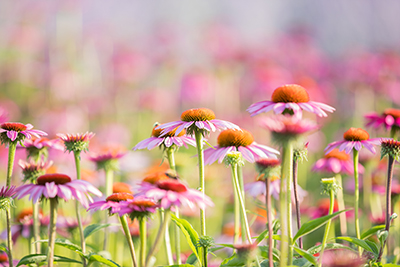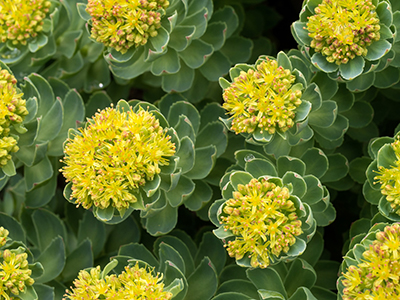Immune Support: Preventing Seasonal Cold and Flu
Winter can be a beautiful time of year, especially if you enjoy activities involving fluffy snow and shimmering ice. Let’s delve into some key natural strategies to keep your immune system healthy throughout the winter and help you continue to function at your best.
We hear it on a daily basis, but the role of hygiene deserves another important mention. Proper hand-washing entails lathering with soap for at least 20 seconds and is recommended before, during, and after preparing food; before eating food; before and after caring for someone who is sick; after using the bathroom; after blowing your nose, coughing, or sneezing; as well as after other exposures such as animals or garbage.[1] Hand sanitizers are not considered as effective as soap and water but still play a crucial role in public places.[1] Adopting good hand-sanitization procedures alone has been shown to reduce the number of absentee days in school children.[2]
From a diet-and-supplement perspective, it is fundamental to boost the intake of plant-based flavonoids and vitamin C, as well as to avoid or limit refined sugar. For instance, supplementing with a juice-powder concentrate extracted from fruits and vegetables for six months has been shown to reduce the number of days with moderate-to-severe cold symptoms by almost two days compared to a placebo drink.[3] Similarly, supplementing with 500–1,000 mg vitamin C, with or without low-dose zinc, throughout the cold season has been shown to reduce the frequency of the cold, reduce the duration of runny nose symptoms by up to 27%, and speed up recovery time.[4][5][6] Limiting your intake of refined sugar is important, because sugar and other refined carbohydrates have been shown to suppress the antibacterial (and presumably antiviral too) activity of immune cells such as neutrophils for up to five hours after consumption![7]
Supplements and Immune Health
Green Tea
An emerging natural agent with antiviral effects,[8] green tea—consumed either as an extract in tablet form (equal to about 400 mg green tea catechins)—has been shown to reduce the incidence of the flu among health-care workers by 75%.[9] In another study, green-tea extract was shown to reduce the total number of illnesses lasting two days or more by over 22%, reduce the total number of days with symptoms by over 35%, and increase the amount of antibody produced by immune cells.[8] Another study found that consumption of green tea as a beverage, between one and five cups per day, reduced the incidence of the flu by between 40 and 50% in school-aged children.[10]
 Probiotics
Probiotics
Information on probiotics has exploded in the last few years. It is becoming well-recognized that probiotics can effectively reduce the incidence of upper respiratory tract infections.[11] A review paper found that probiotic supplementation was able to significantly reduce the number of upper respiratory tract infections and reduce antibiotic prescription rates.[11] Probiotics are thought to interact with immune cells that live in the gut,[12] stimulating the production of secretory immunoglobulin A (IgA), which neutralizes viruses and bacteria in the gut and affects immune-cell function systemically throughout the body.[13]
 Vitamin D
Vitamin D
Vitamin D is an important nutrient for modulating immune function. A randomized study found that vitamin D supplementation (1,200 IU) to school-aged children during the winter months resulted in a greater than 40% reduction in the incidence of influenza A.[14] This was accompanied by a significant reduction in asthma attacks among children with a previous history of asthma.[14] Vitamin D is especially important for Canadians, since the prevalence of borderline and even frank deficiency is high in Canada.[15] To determine the most appropriate dose of vitamin D for you, a blood test costing about $40 can be done through your family doctor or naturopathic doctor.
 Echinacea
Echinacea
A popular immune-stimulating herb, echinacea has had its share of controversy involving its effectiveness. First of all, there is a respectable level of evidence indicating that echinacea can be effective. For instance, a 2007 study in The Lancet, a high-ranking medical journal, found that the “published evidence supports echinacea’s benefit in decreasing the incidence and duration of the common cold.”[16] Use of echinacea was found to decrease the risk of developing the common cold by more than 40% and decreased the duration of the cold by 1.4 days.[16] In another study, echinacea was able to reduce the total number of cold episodes, the total number of days with cold symptoms, and the need for pain-killer medications.[17] When nasal swabs taken from the participants were tested, echinacea was found to inhibit virally confirmed colds.[17]
When using herbal supplements, the quality of the product is of paramount importance. Depending on the way the herb has been grown, when it has been harvested, and how it is processed and extracted, the end product contains vastly differing chemical constituents. It has been pointed out that, when reviewing the studies of echinacea, there is in fact great variability with respect to the products used.[18] Alkamides are the active molecules in echinacea; therefore, the effectiveness of the product depends on the quantity of these contained.[19] A tincture (liquid alcohol solution) containing alkamides will result in a peculiar tingling sensation in the mouth on tasting it, and this can be a simple “taste test” as to the quality of the product. If your echinacea product doesn’t have this tingling effect, it may not be very effective.
One review paper looked at 22 studies; 19 for the treatment of the common cold, and 3 for the prevention of the common cold.[18] This review found that echinacea was effective for treatment, but less so as a preventative.[18] Since this review was published, other evidence has emerged also suggesting some effectiveness for echinacea when used preventatively;[17] however, it is possible that it is most effective when used at the first signs of a cold (early treatment). Dosing also varies, with between 5 and 15 mL of a tincture commonly used for adults in studies.[18]
Clearly, product quality, dosing, and timing of use are factors that make a big difference to the effectiveness of echinacea for the common cold.
 Lifestyle Influences on Immune Health
Lifestyle Influences on Immune Health
Let’s take a closer look at lifestyle factors, namely the impact of stress—so prevalent, especially today. Although stress is commonly recognized as suppressing healthy immune function, it is not generally known how this happens or what can be done about it.
The stress response, also known as the general adaptation syndrome (GAS), consists of three stages. First is “fight-or-flight,” during which the body tries to defend itself from the immediate perceived threat. Epinephrine and cortisol are secreted by the adrenal glands to increase alertness, increase blood sugar levels, increase breathing rate and circulation, and direct blood flow to the heart and large muscle groups. Simultaneously, bodily functions not immediately necessary for survival are inhibited, such as digestion. If the threat or stressor persists, the second stage of the GAS, the resistance stage, ensues. During this stage, the body tries to maintain elevated cortisol output in order to adapt to the continued stressor. If this continues over a long period of time, the adrenal glands are no longer able to sustain adequate cortisol production, and the third stage of the GAS occurs: This is the exhaustion stage. A popular term to describe this is “adrenal fatigue,” and it has been termed “mild adrenocortical deficiency” by others.[20]
Individuals affected by adrenal fatigue or mild adrenocortical deficiency often suffer from lingering or recurrent respiratory tract infections. For example, this would include “the cold that doesn’t go away” with low-grade symptoms such as fatigue, sinus congestion, or sniffly nose that lasts for weeks, or the person who gets two to three colds or flus in quick succession. Either of these scenarios are characteristic of adrenal fatigue.
For individuals experiencing high levels of stress, so common in today’s hectic society, use of herbs and nutrients to support adrenal-gland function can be helpful in not only improving immune function, but also improving generalized fatigue and mood issues impacted by stress. Supplementation with extra B vitamins is important for supporting adrenal function, since the B vitamins are cofactors in the production of energy and are utilized at a higher rate when the body is under stress.[21][22] For instance, one study found that administering cortisol to healthy young men decreased blood levels of the B vitamins between 13 and 24%![21]
 Herbs that help support the body’s response to stress are called “adaptogens” and include ashwagandha (Withania somnifera), Siberian ginseng (Eleutherococus senticosus), and rhodiola (Rhodiola rosea).[23] Adaptogens act as cortisol regulators and have specifically been shown to increase cortisol production if low, or lower it if it’s elevated.[24][25] On a larger scale, adaptogenic herbs help the body to handle stress by reducing the subjective perception of stress, fatigue, and anxiety, while improving mental and physical performance.[24][25][26][27] Using adaptogenic herbs is thus an important way to ensure healthy immune function for individuals suffering from high levels or long duration of stress. If you are on medications, it is recommended that you consult with a naturopathic doctor prior to taking herbal supplements.
Herbs that help support the body’s response to stress are called “adaptogens” and include ashwagandha (Withania somnifera), Siberian ginseng (Eleutherococus senticosus), and rhodiola (Rhodiola rosea).[23] Adaptogens act as cortisol regulators and have specifically been shown to increase cortisol production if low, or lower it if it’s elevated.[24][25] On a larger scale, adaptogenic herbs help the body to handle stress by reducing the subjective perception of stress, fatigue, and anxiety, while improving mental and physical performance.[24][25][26][27] Using adaptogenic herbs is thus an important way to ensure healthy immune function for individuals suffering from high levels or long duration of stress. If you are on medications, it is recommended that you consult with a naturopathic doctor prior to taking herbal supplements.
Conclusion
A combination strategy of diet, nutritional supplements such as probiotics, vitamin D, and green tea, as well as appropriate, good-quality herbs such as echinacea and adaptogens, can be an effective strategy to help you reduce your risk of cold and flu this winter.
References
- Centers for Disease Control. Wash your hands. · http://www.cdc.gov/features/handwashing/ ∙ Updated 2013-03-25. · Accessed 2013-08-12.
- Lau, C.H., et al. “Hand hygiene instruction decreases illness-related absenteeism in elementary schools: A prospective cohort study.” BMC Pediatrics, Vol. 12 (2012): 52.
- Roll, S., M. Nocon, and S.N. Willich. “Reduction of common cold symptoms by encapsulated juice powder concentrate of fruits and vegetables: A randomised, double-blind, placebo-controlled trial.” The British Journal of Nutrition, Vol. 105, No. 1 (2011): 118–122.
- Sasazuki, S., et al. “Effect of vitamin C on common cold: Randomized controlled trial.” European Journal of Clinical Nutrition, Vol. 60, No. 1 (2006): 9–17.
- Maggini, S., S. Beveridge, and M. Suter. “A combination of high-dose vitamin C plus zinc for the common cold.” The Journal of International Medical Research, Vol. 40, No. 1 (2012): 28–42.
- Van Straten, M., and P. Josling. “Preventing the common cold with a vitamin C supplement: A double-blind, placebo-controlled survey.” Advances in Therapy, Vol. 19, No. 3 (2002): 151–159.
- Sanchez, A., et al. “Role of sugars in human neutrophilic phagocytosis.” The American Journal of Clinical Nutrition, Vol. 26, No. 11 (1973): 1180–1184.
- Rowe, C.A., et al. “Specific formulation of Camellia sinensis prevents cold and flu symptoms and enhances gamma, delta T cell function: A randomized, double-blind, placebo-controlled study.” Journal of the American College of Nutrition, Vol. 26, No. 5 (2007): 445–452.
- Matsumoto, K., et al. “Effects of green tea catechins and theanine on preventing influenza infection among healthcare workers: A randomized controlled trial.” BMC Complementary and Alternative Medicine, Vol. 11 (2011): 15.
- Park, M., et al. “Green tea consumption is inversely associated with the incidence of influenza infection among schoolchildren in a tea plantation area of Japan.” The Journal of Nutrition, Vol. 141, No. 10 (2011): 1862–1870.
- Hao, Q., et al. “Probiotics for preventing acute upper respiratory tract infections.” The Cochrane Database of Systematic Reviews, No. 9 (2011): CD006895.
- Perdigon, G., et al. “Immune system stimulation by probiotics.” Journal of Dairy Science, Vol. 78, No. 7 (1995): 1597–1606.
- Hatakka, K. and M. Saxelin. “Probiotics in intestinal and non-intestinal infectious diseases—Clinical evidence.” Current Pharmaceutical Design, Vol. 14, No. 14 (2008): 1351-67.
- Urashima, M., et al. “Randomized trial of vitamin D supplementation to prevent seasonal influenza A in schoolchildren.” The American Journal of Clinical Nutrition, Vol. 91, No. 5 (2010): 1255-60.
- Whiting, S.J., et al. “The vitamin D status of Canadians relative to the 2011 Dietary Reference Intakes: An examination in children and adults with and without supplement use.” The American Journal of Clinical Nutrition, Vol. 94, No. 1 (2011): 128-35.
- Shah, S.A., et al. “Evaluation of Echinacea for the prevention and treatment of the common cold: A meta-analysis.” The Lancet Infectious Diseases, Vol. 7, No. 7 (2007): 473–480.
- Jawad, M., et al. “Safety and efficacy profile of Echinacea purpurea to prevent common cold episodes: A randomized, double-blind, placebo-controlled trial.” Evidence-Based Complementary and Alternative Medicine, Vol. 2012 (2012): 841315.
- Linde, K., et al. “Echinacea for preventing and treating the common cold.” The Cochrane Database of Systematic Reviews, No. 1 (2006): CD000530.
- Woelkart, K., and R. Bauer. “The role of alkamides as an active principle of echinacea.” Planta Medica, Vol. 73, No. 7 (2007): 615–623.
- Prousky, J. “Mild adrenocortical deficiency and its relationship to: (1) Chronic fatigue syndrome; (2) Nausea and vomiting of pregnancy and hyperemesis gravidarum; and (3) Systemic lupus erythematosus.” Journal of Orthomolecular Medicine, Vol. 27, No. 4 (2012): 165–176.
- Berg, A.L., et al. “The effects of adrenocorticotrophic hormone and cortisol on homocysteine and vitamin B concentrations.” Clinical Chemistry and Laboratory Medicine, Vol. 44, No. 5 (2006): 628–631.
- Mahuren, J.D., et al. “Adrenocorticotropic hormone increases hydrolysis of B-6 vitamers in swine adrenal glands.” The Journal of Nutrition, Vol. 129, No. 10 (1999): 1905–1908.
- Panossian, A., and G. Wikman. “Evidence-based efficacy of adaptogens in fatigue, and molecular mechanisms related to their stress-protective activity.” Current Clinical Pharmacology, Vol. 4, No. 3 (2009): 198–219.
- Gaffney, B.T., H.M. Hügel, and P.A. Rich. “The effects of Eleutherococcus senticosus and Panax ginseng on steroidal hormone indices of stress and lymphocyte subset numbers in endurance athletes.” Life Sciences, Vol. 70, No. 4 (2001): 431–442.
- Gaffney, B.T., H.M. Hügel, and P.A. Rich. “Panax ginseng and Eleutherococcus senticosus may exaggerate an already existing biphasic response to stress via inhibition of enzymes which limit the binding of stress hormones to their receptors.” Medical Hypotheses, Vol. 56, No. 5 (2001): 567–572.
- Chandrasekhar, K., J. Kapoor, and S. Anishetty. “A prospective, randomized double-blind, placebo-controlled study of safety and efficacy of a high-concentration full-spectrum extract of ashwagandha root in reducing stress and anxiety in adults.” Indian Journal of Psychological Medicine, Vol. 34, No. 3 (2012): 255–262.
- Panossian, A., G. Wikman, and J. Sarris. “Rosenroot (Rhodiola rosea): Traditional use, chemical composition, pharmacology and clinical efficacy.” Phytomedicine, Vol. 17, No. 7 (2010): 481–493.

 Stores
Stores